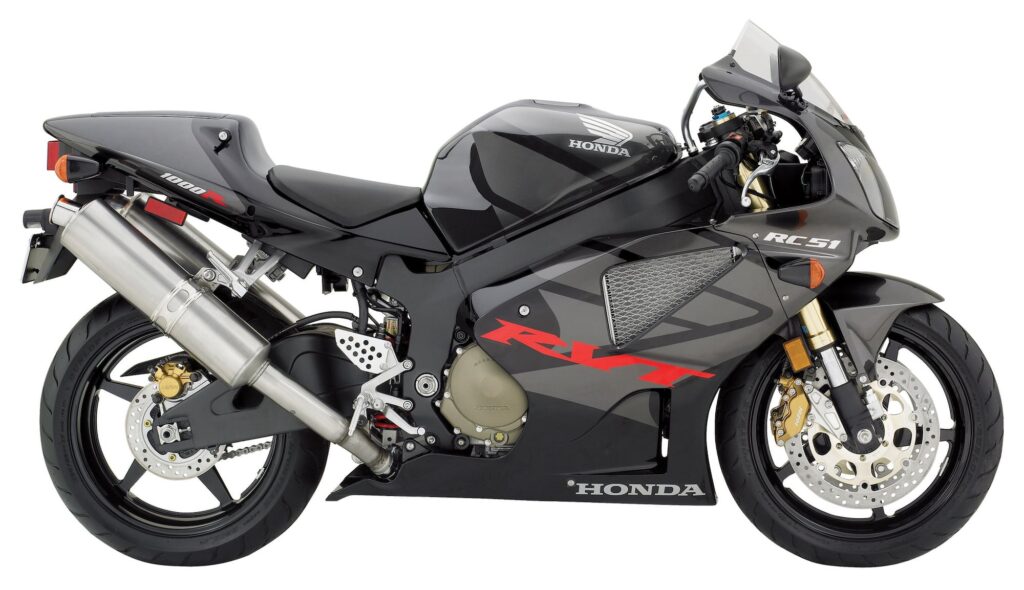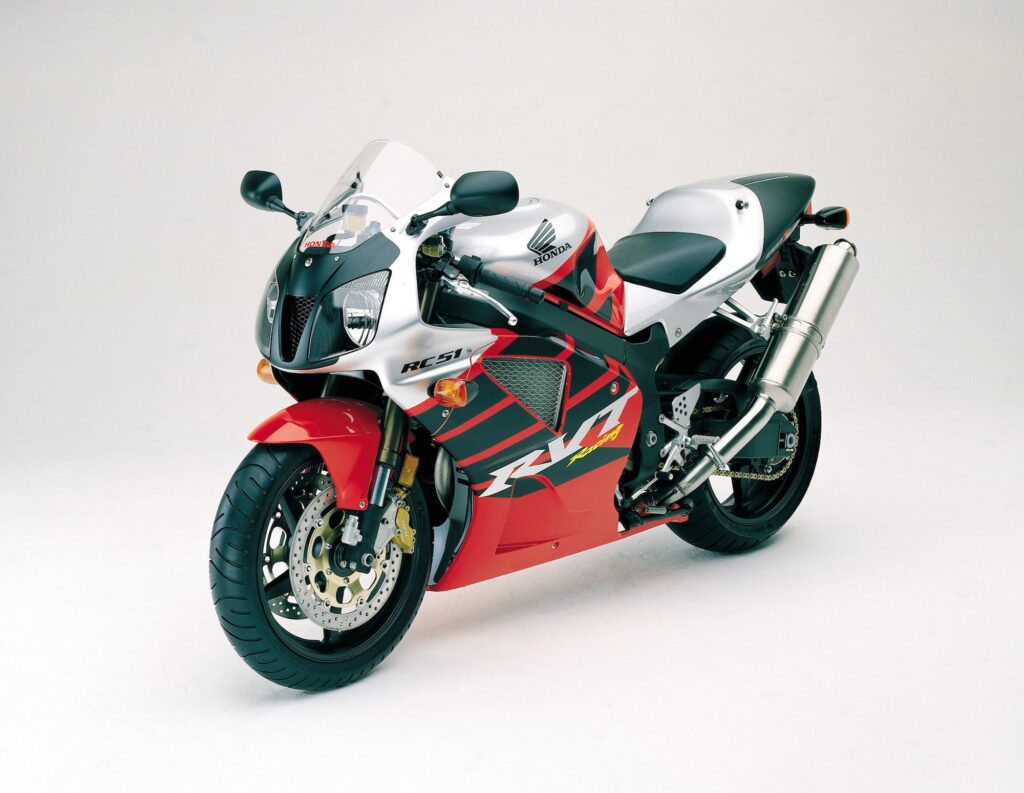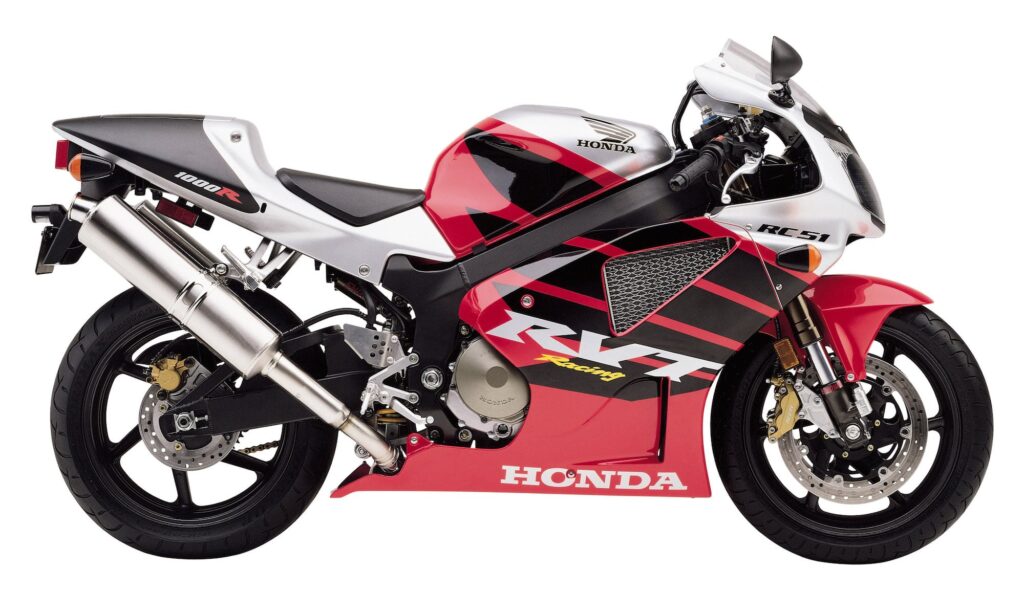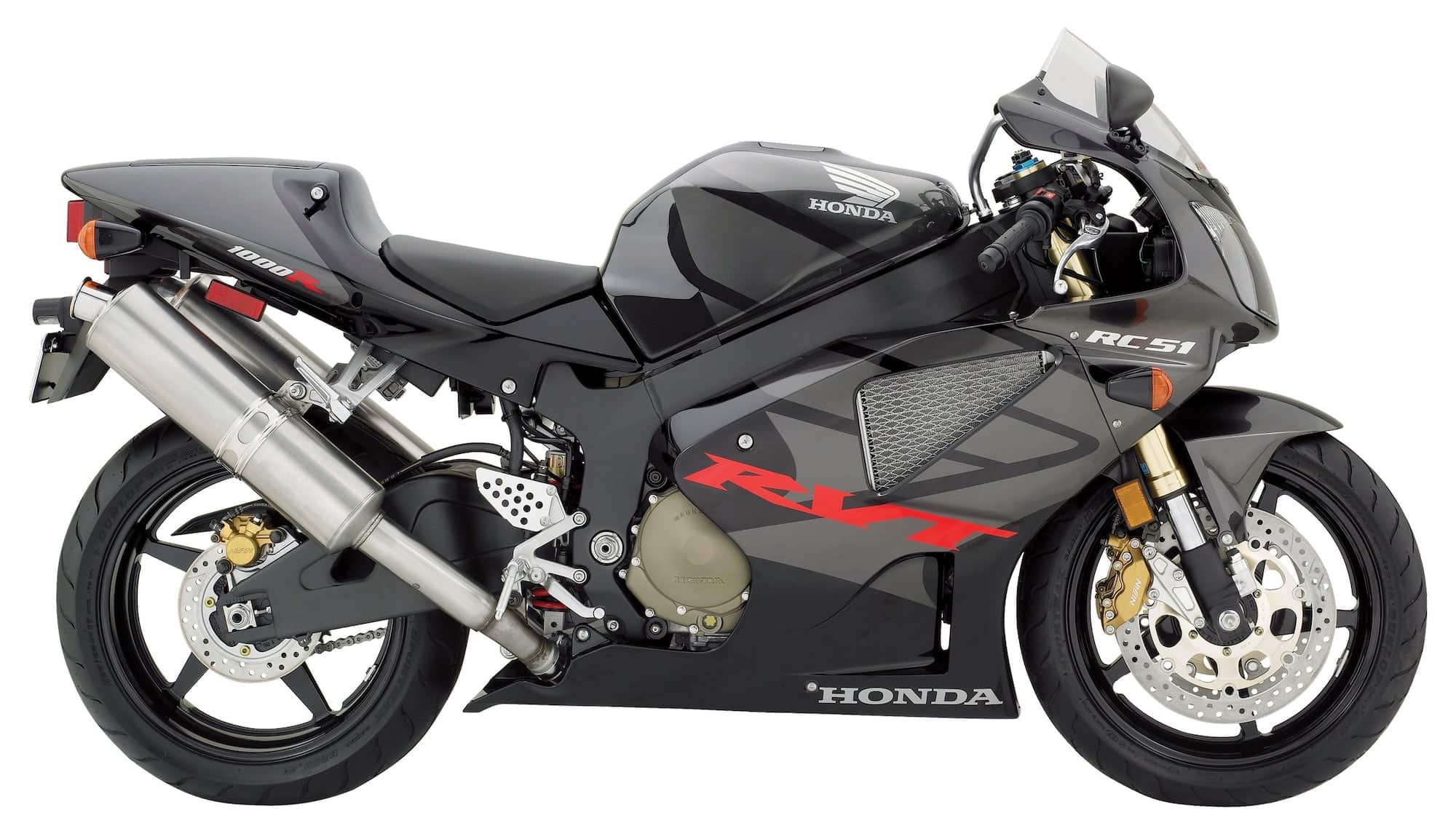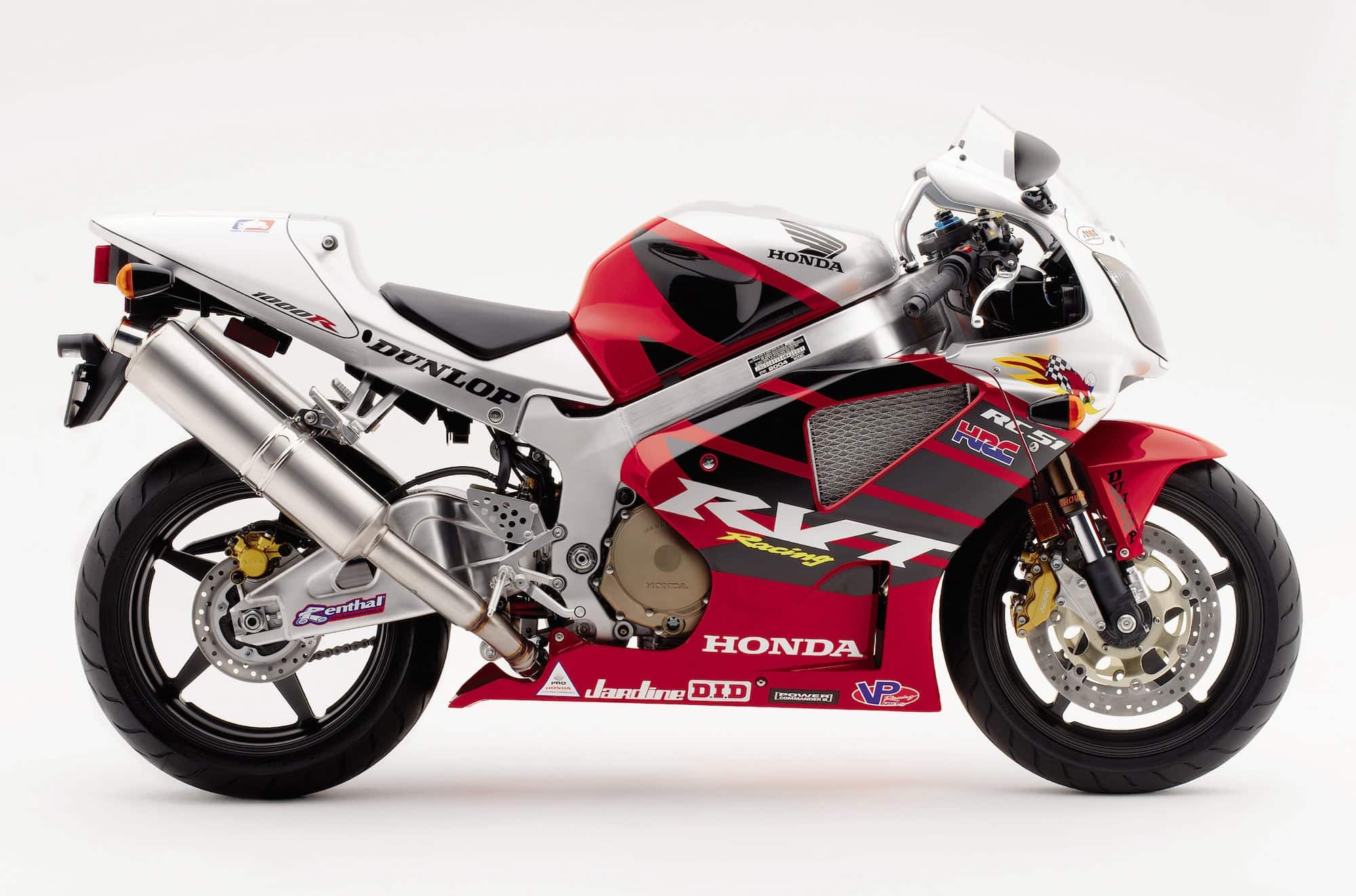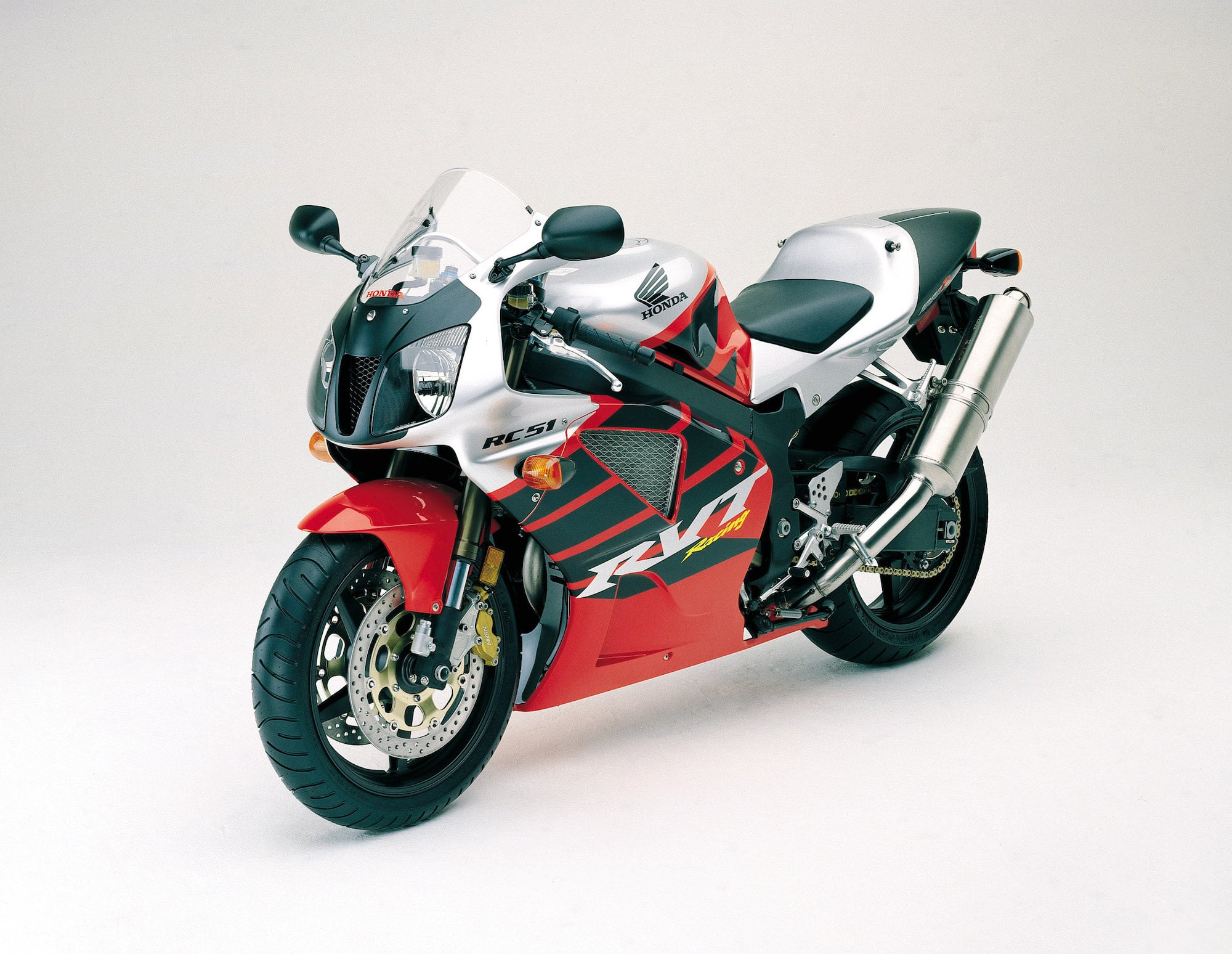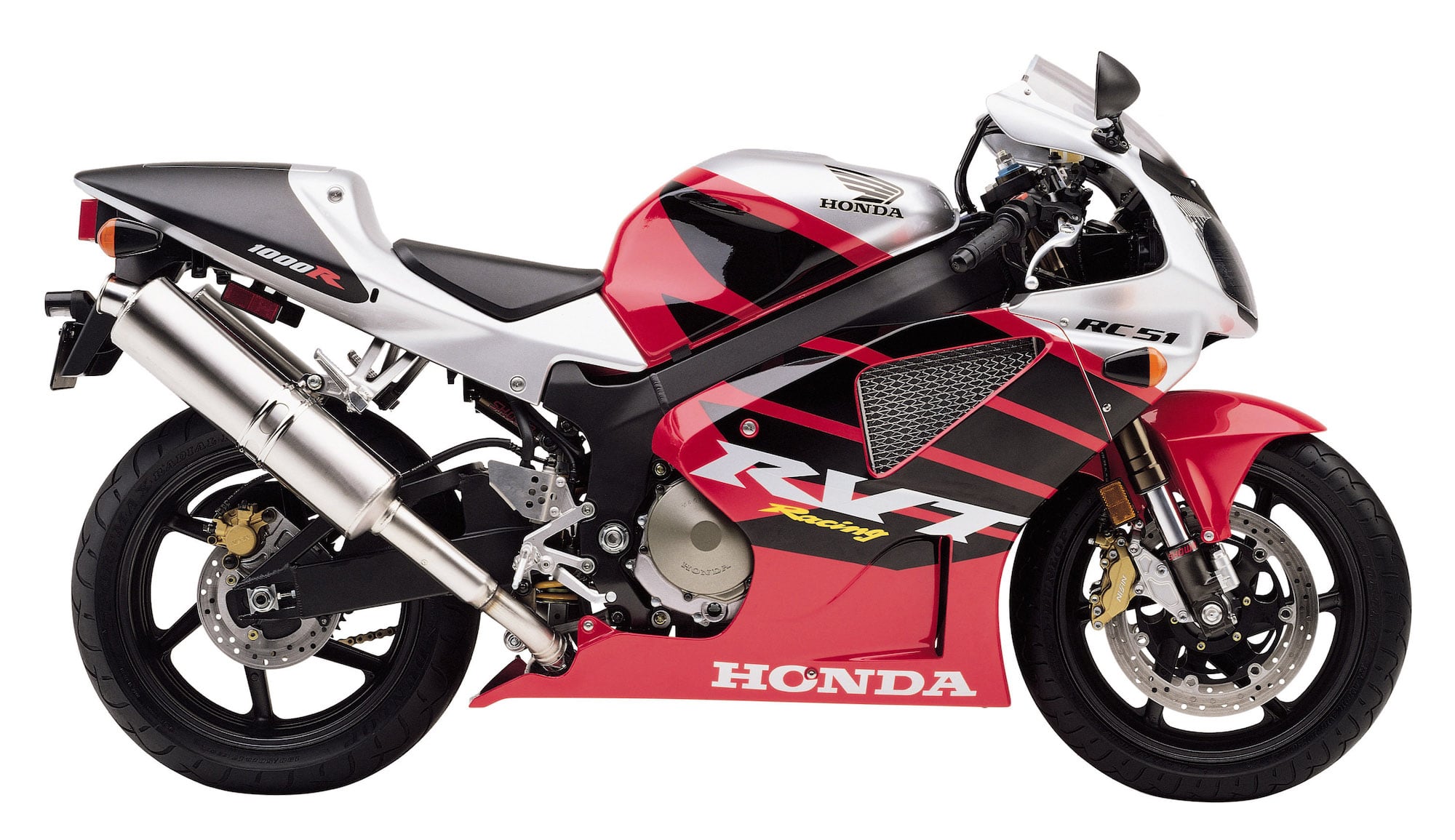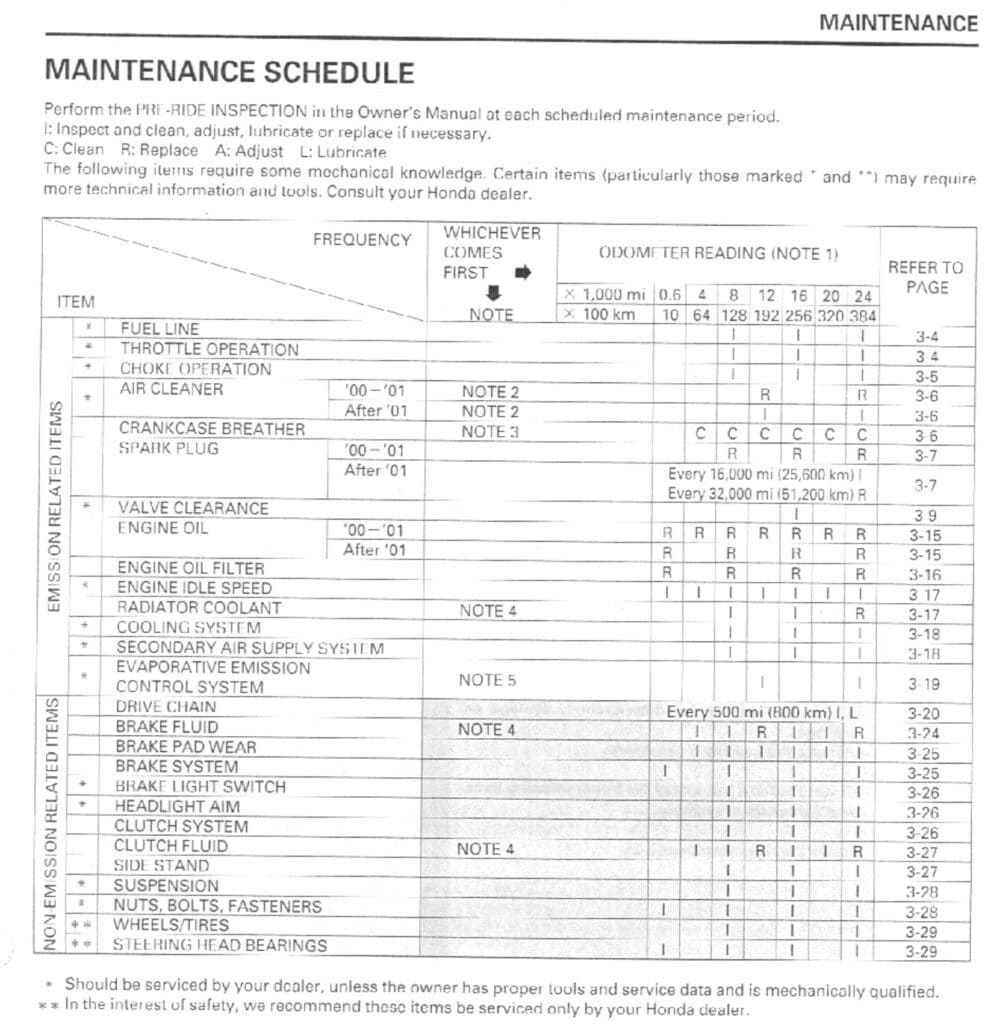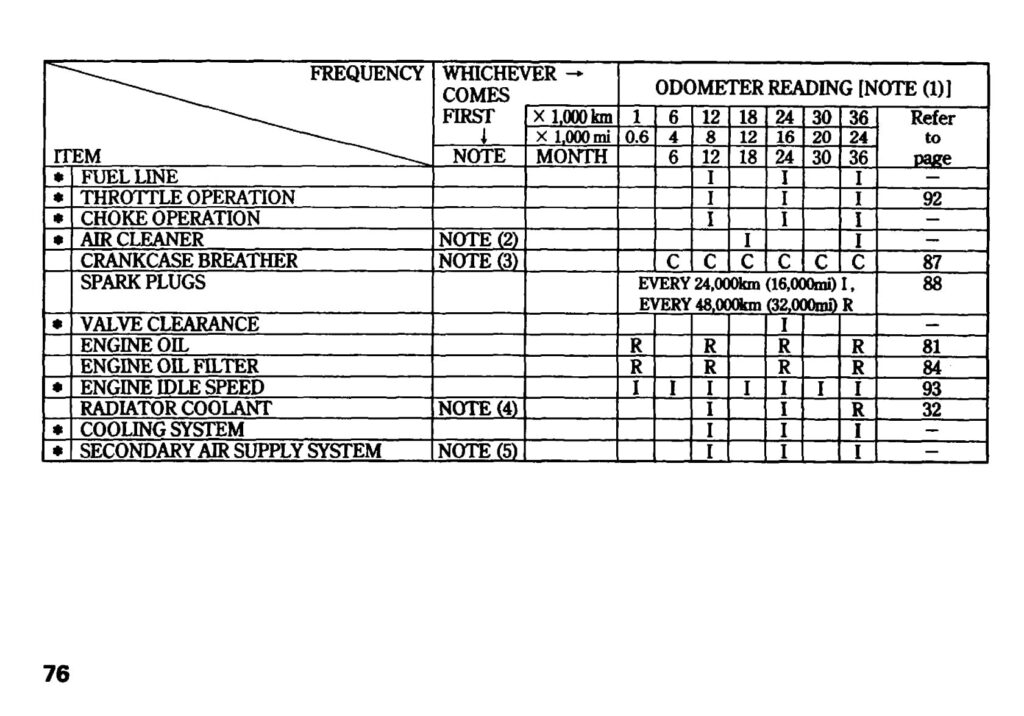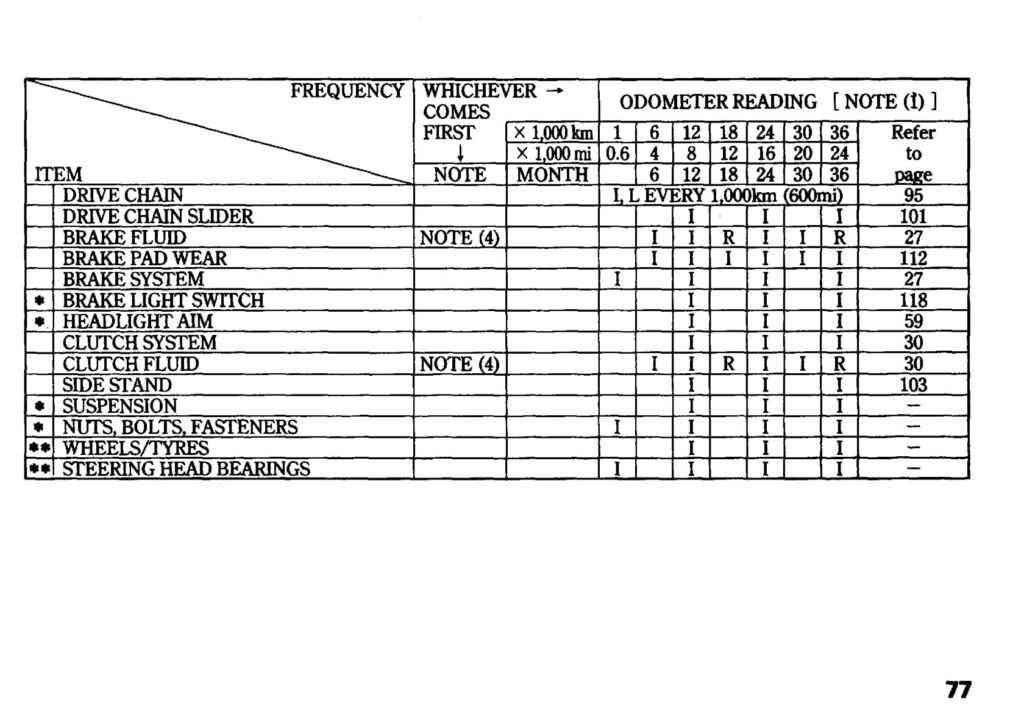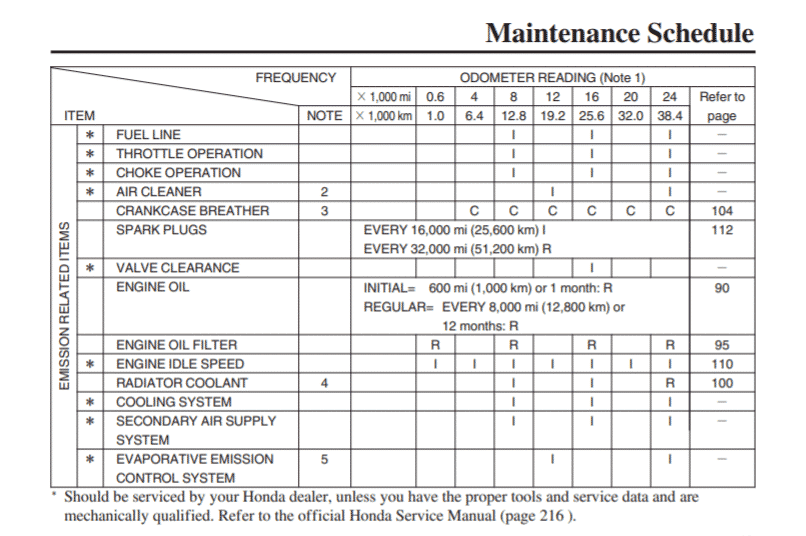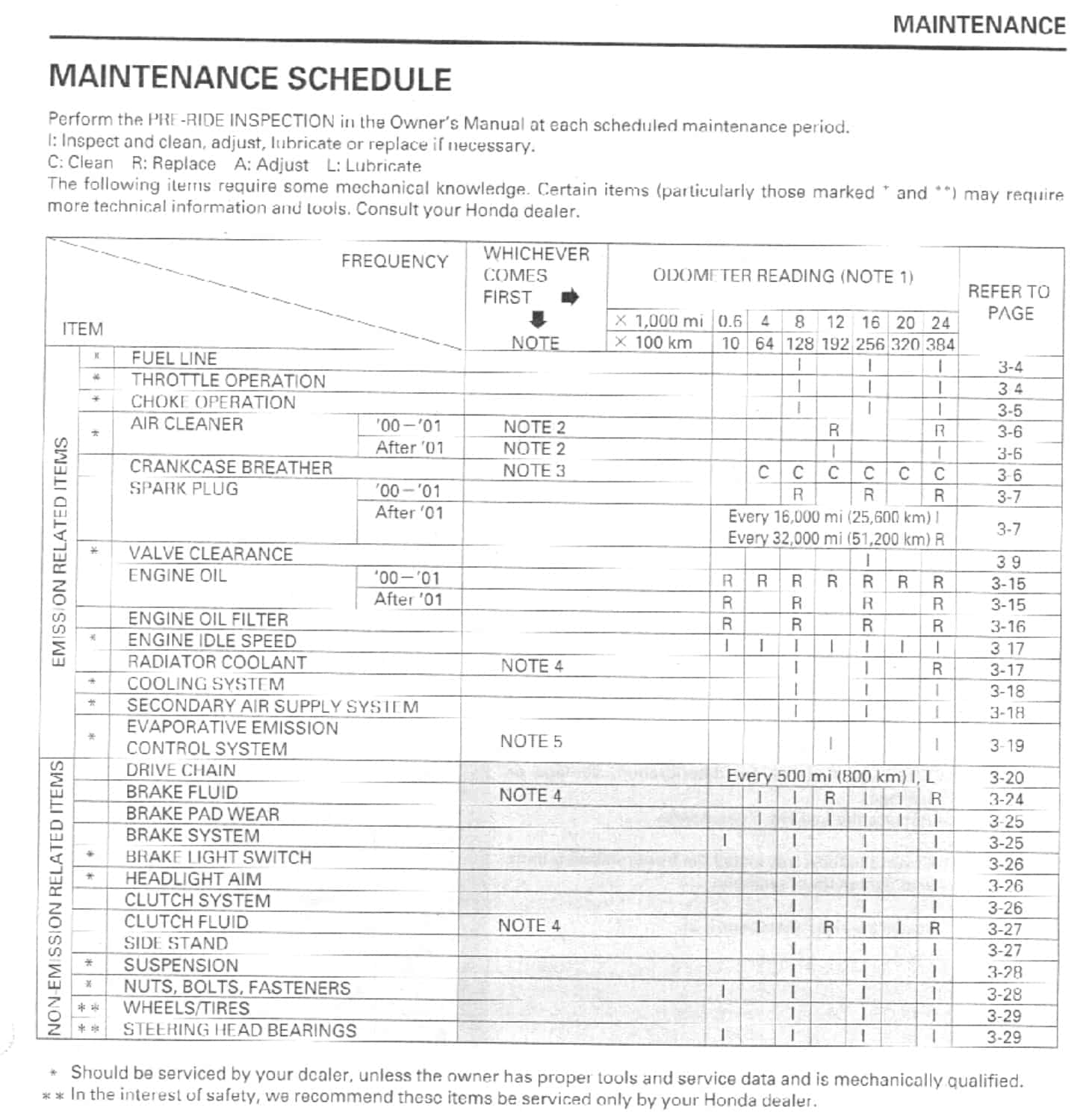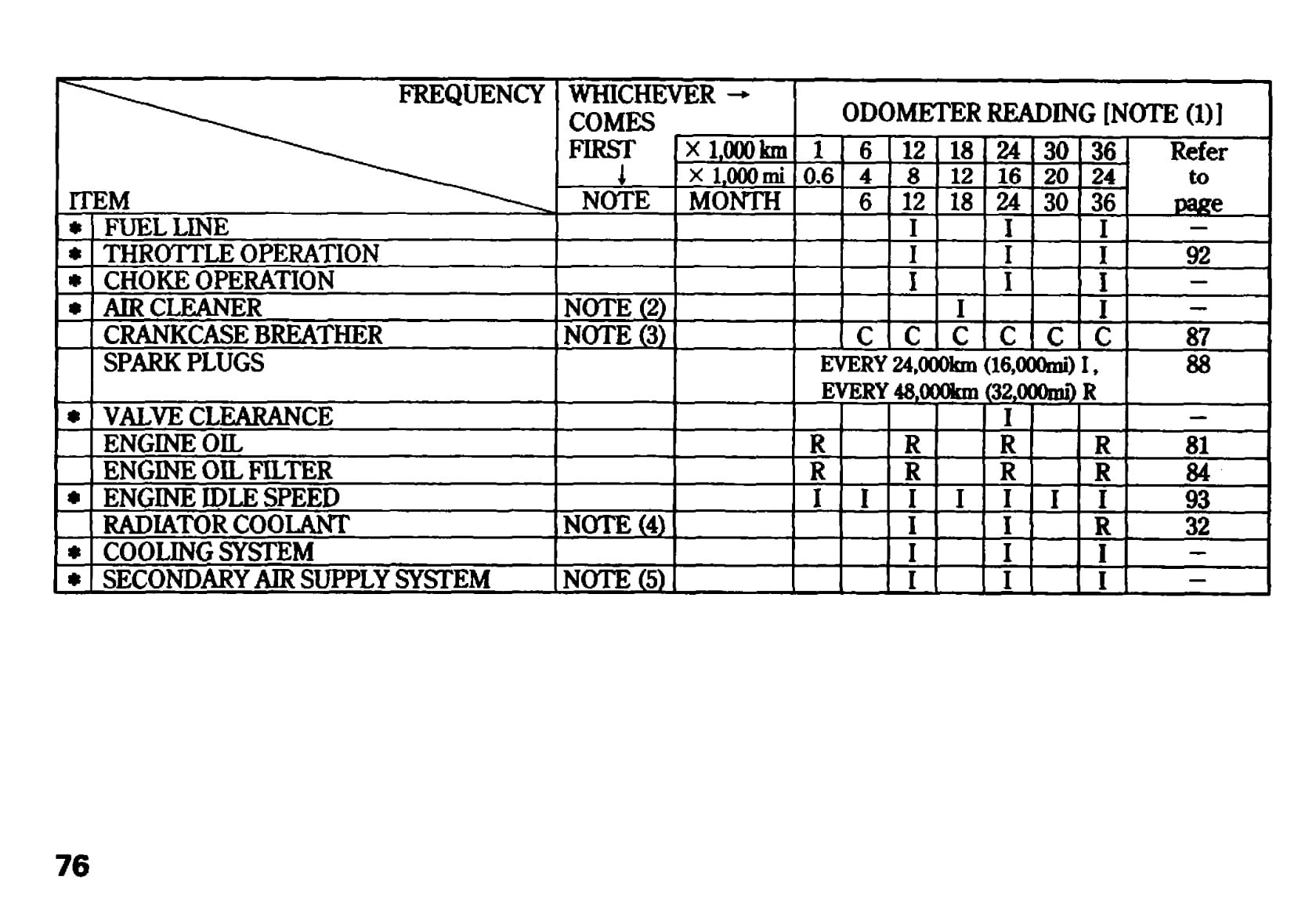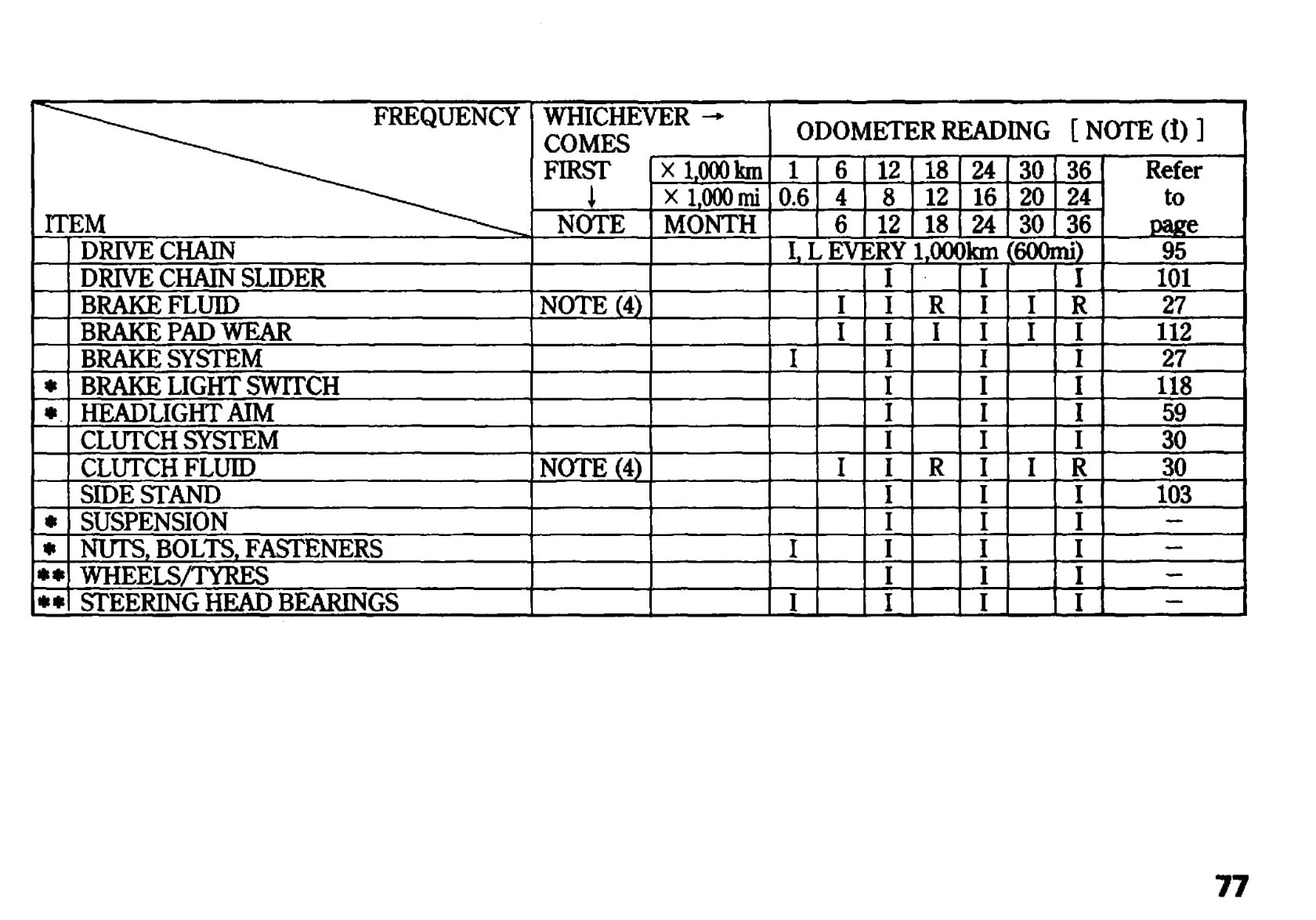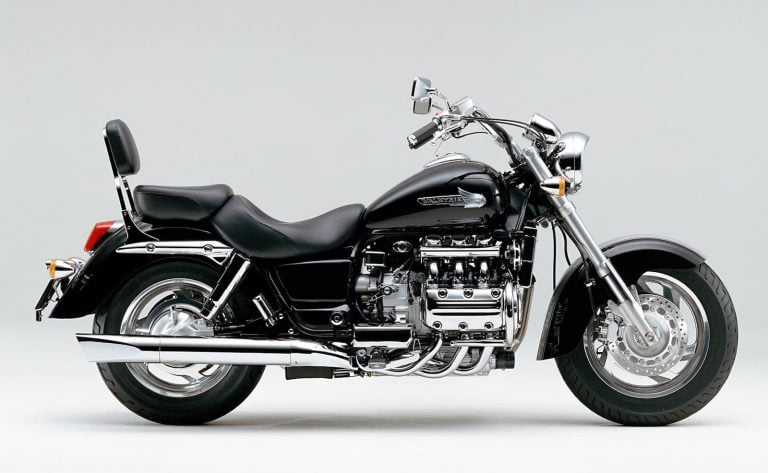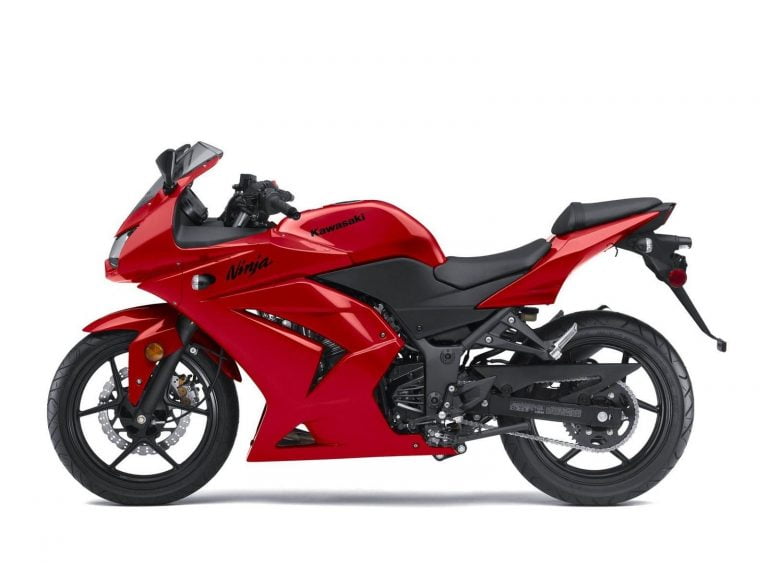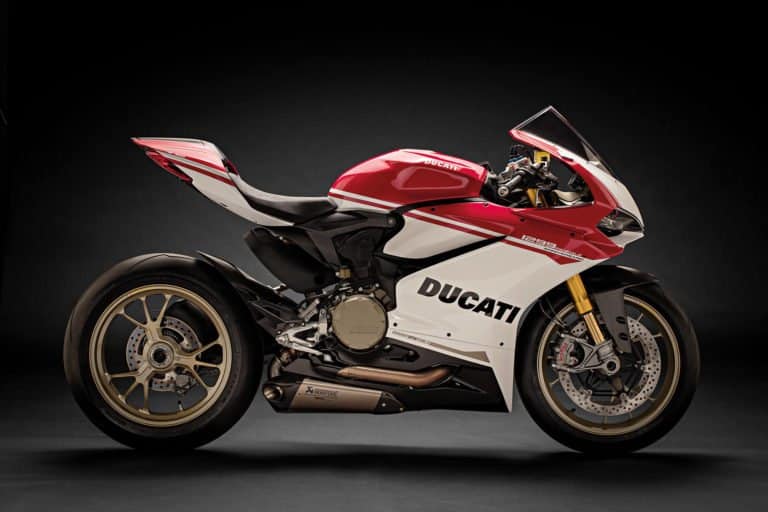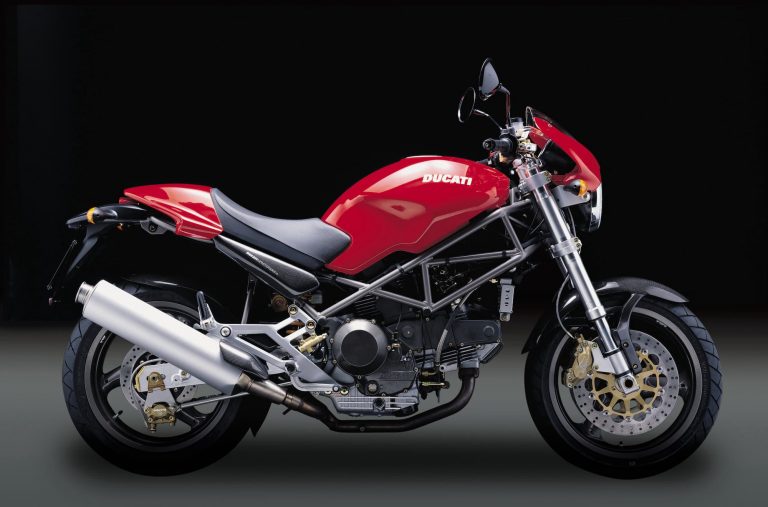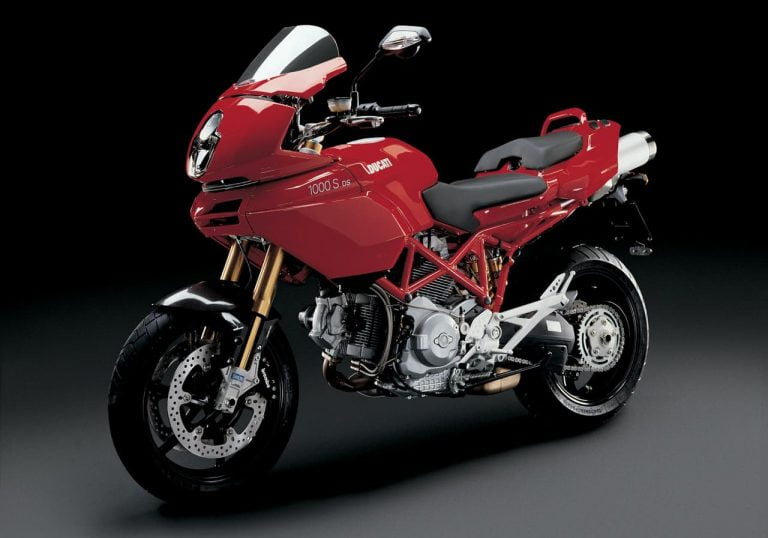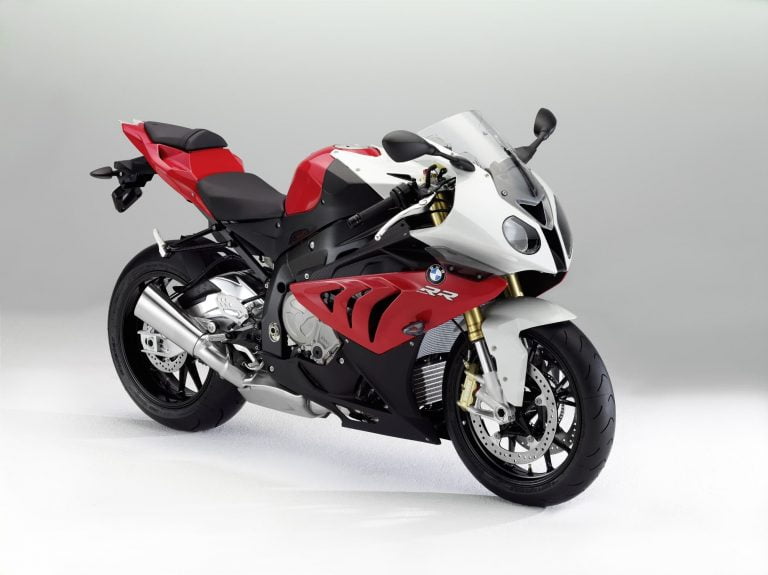Honda RC51 / VTR1000 SP-1 and SP-2 Simplified Maintenance Schedule and Service Intervals
This is the maintenance schedule and associated service intervals for the Honda RC51 a.k.a. RVT1000R, or the VTR1000 SP1 and SP2.
The Honda RC51 is also known as the RVT1000R in the United States or as the VTR1000 SP-1 and SP-2 in Europe and Australia. It’s a supersport motorcycle powered by a 90-degree V-twin. Honda produced the RC51 / VTR1000 SP-1 and SP-2 to win the World Superbike Championship under changing rules.
The Honda RC51’s engine is a 999cc dual overhead cam V-twin unit with two fuel injectors and four valves per cylinder. It makes relatively modest peak power of 100 kW / 136 hp at 9500 rpm, but with a lot of torque delivered down low. Power is delivered to the rear wheel by a close-ratio, six-speed transmission, and of course a chain drive.
There are some differences between the SP-1 and SP-2 versions, and both maintenance schedules are shown below for convenience.
Though it shares a name code in some places, the VTR1000 SP-1 / SP-2 is very different from the VTR1000 Firestorm, which was intentionally a road motorcycle.
This site has links for things like oil and spark plugs from which we earn a commission (which unfortunately nobody can save, not even us). If you appreciate this work, then please use those links. Thanks!
Honda RC51 Service Intervals
The Honda RC51 has slightly different service intervals depending on which generation you buy.
- 2000-2001 SP-1: 4000 mile / 6400 km between oil changes. Change spark plugs every 8000 miles.
- 2002+ SP-2: 8000 mile / 12800 km between oil changes. Change spark plugs every 32000 miles.
Aside from that, the Sp-1 and SP-2 both have valve clearance inspection intervals of 16000 miles / 25600 km (or 24000 km in some manuals).
Since the RC51 has a hydraulic clutch, make sure to keep the clutch fluid updated with the brake fluid.
Finally, the RC51 has a liquid cooled engine. Swapping to Honda Long-Life Coolant would be a good long-term move.
Honda RC51 Maintenance Schedule
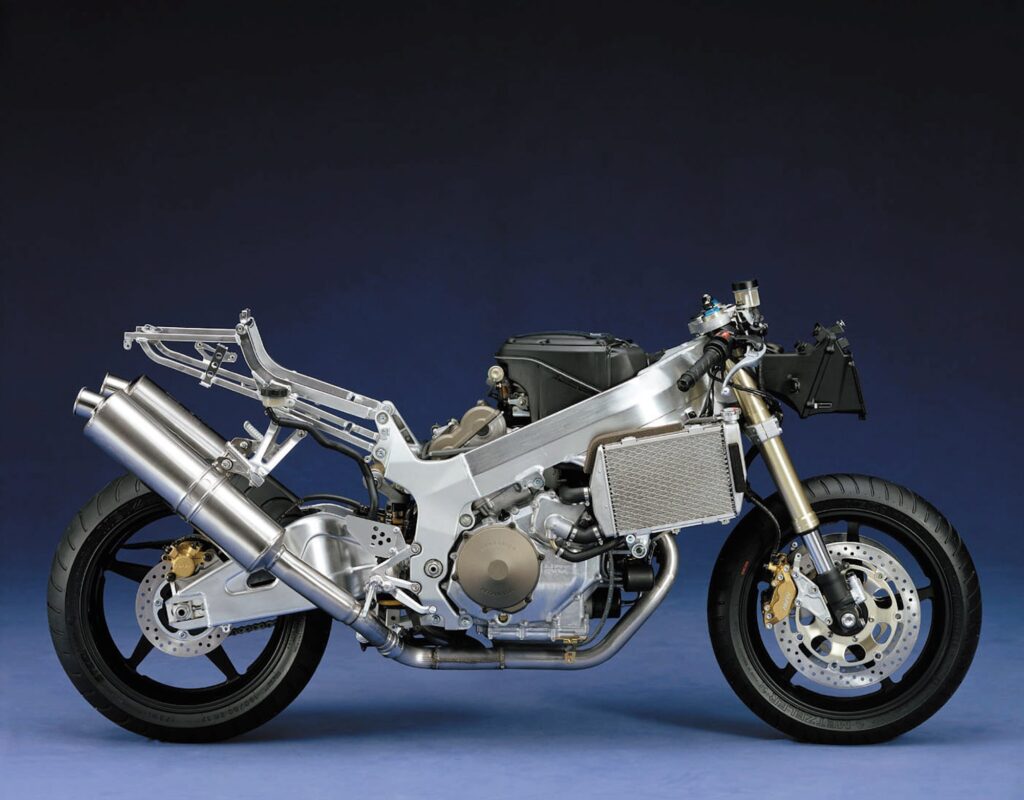
Below is the maintenance schedule for the Honda RC51. We’ve separated out three tables
- Maintenance for the 2000-2001 RC51 (VTR1000 SP-1)
- Maintenance for the 2002-2010 RC51 (VTR1000 SP-2)
- The “regular inspection” checklist, which is the same.
Note: We’ve grouped together the maintenance schedule for both versions of the RC51 (2000-2001, and 2002+) as it’s likely many people will just visit this one page (and it’s an ageing bike). Note that the required maintenance for the RC51 is slightly lighter on the SP2 as it is on the SP1. See both tables below.
Notes:
- Honda recommends you get a mechanic to service steering head bearings, tires, and wheels.
- Keep repeating the maintenance schedule in the pattern shown, every 4000 miles / 6400 km or every year or other period.
Maintenance Procedures:
- I: inspect and clean, adjust, lubricate, or replace, if necessary
- C: clean
- A: adjust
- L: lubricate
- R: replace
VTR1000 SP-1 Maintenance Schedule (2000-2001)
Below is the maintenance schedule for the 2000-2001 SP-1. Maintenance is a little more intense than on the SP-2.
You may wonder: Can you just follow the SP-2’s maintenance schedule, which is more relaxed? Possibly, but Honda’s own service manual for the RC51 shows both service schedules at the same time. So it’s not a case of the latter service schedule being just an updated version of the original and applying equally to the SP-1.
| mi x 1000 | 4 | 8 | 12 | 16 | 20 | 24 | |
|---|---|---|---|---|---|---|---|
| km x 1000 | 6.4 | 12.8 | 19.2 | 25.6 | 32 | 38.4 | Every |
| Inspection checklist (see below) — Perform all inspections | I | I | I | ||||
| Engine Oil | R | R | R | R | R | R | Replace every 12 months |
| Engine oil filter | R | R | R | ||||
| Spark Plugs | R | R | R | ||||
| Valve Clearances | I | ||||||
| Air Cleaner | R | R | More often if riding in dusty / wet conditions | ||||
| Crankcase Breather | C | C | C | C | C | C | More often if pinning the throttle |
| Engine Idle Speed | I | I | I | I | I | I | |
| Radiator coolant | I | I | R | Replace every 2 years | |||
| Evaporative Emission Control System | I | I | |||||
| Brake Fluid | I | I | R | I | I | R | Replace every 2 years |
| Brake Pad Wear | I | I | I | I | I | I | |
| Clutch Fluid | I | I | R | I | I | R | Replace every 2 years |
VTR1000 SP-2 Maintenance Schedule (2002-2010)
Below is the maintenance schedule for the 2002-2010 iteration of the RC51. The required maintenance is a little lighter.
| mi x 1000 | 4 | 8 | 12 | 16 | 20 | 24 | |
|---|---|---|---|---|---|---|---|
| km x 1000 | 6.4 | 12.8 | 19.2 | 25.6 | 32 | 38.4 | Every |
| Inspection checklist (see below) — Perform all inspections | I | I | I | ||||
| Engine Oil | R | R | R | Replace every 12 months | |||
| Engine oil filter | R | R | R | ||||
| Spark Plugs | I | Replace every 32000 miles / 51200 km | |||||
| Valve Clearances | I | ||||||
| Air Cleaner | I | I | More often if riding in dusty / wet conditions | ||||
| Crankcase Breather | C | C | C | C | C | C | More often if pinning the throttle |
| Engine Idle Speed | I | I | I | I | I | I | |
| Radiator coolant | I | I | R | Replace every 2 years | |||
| Evaporative Emission Control System | I | I | |||||
| Brake Fluid | I | I | R | I | I | R | Replace every 2 years |
| Brake Pad Wear | I | I | I | I | I | I | |
| Clutch Fluid | I | I | R | I | I | R | Replace every 2 years |
Inspection checklist
Perform this inspection checklist at every scheduled service.
| RC51 Inspection Checklist (all years) |
|---|
| Fuel Lines — Inspect condition, for leaks |
| Throttle Operation, including free play |
| Choke (Fast Idle) Operation |
| Cooling System — Inspect for condition, leaks, and fluid level |
| Brake System — Check correct function |
| Brake Light Switch — Check correct function |
| Clutch System — Check function, for leaks, and adjust free play |
| Side Stand — Check smooth operation (if it’s fitted), lube as necessary |
| Suspension — Check for smooth operation, no leaks (front and rear) |
| Headlight Aim — Adjust after adjusting suspension settings |
| Nuts, Bolts, Fasteners — Check they’re still there, and tighten up as necessary |
| Wheels/Tires — Check condition |
| Steering Head Bearings — Check smooth operation, no notchiness |
| Secondary Air Supply System — Check it works |
Maintaining Your Chain on the Honda RC51
It’s important to maintain your chain on the RC51, as on any chain-driven motorcycle, but particularly one that’ll get a lot of hard use like a race bike.
Use a good-quality chain lubricant like Motul chain paste, or a Motul chain care kit which comes with a couple of handy tools to maintain the chain.
Honda recommends you follow the following chain maintenance schedule:
| Chain maintenance item | Every |
|---|---|
| Check drive chain lubrication condition, lubricating if necessary | 500 mi / 800 km |
| Check drive chain slack, adjusting if necessary 25-35 mm / 1-1 3/8 inches | 500 mi / 800 km |
Notes:
- The above schedule is for regular / road use. Obviously if you track your RC51 you’ll attend to the chain more regularly.
- Do these items (checking/adjusting slack, and checking/applying lubrication) more often if you ride your RC51 in dusty or rainy conditions.
- Always lubricate the chain after washing the motorcycle.
Checking chain slack on the Honda VTR1000 SP-1 / 2 (RC51)
Check chain slack on the RC51 on the middle of the lower part of the chain.
Check the total vertical deflection. It should be between 25-35 mm.

To adjust the chain slack on the RC51, it’s much the same as on other motorcycles.
Make sure that the motorcycle is on a level surface on its kickstand, in neutral, with no weight on it (no saddlebags / luggage, if touring on a superbike is your thing).
- Loosen the rear axle and the adjuster lock nuts on either side of the axle.
- Turn the adjuster nuts to tighten (or loosen) the chain. Keep checking the chain tension to see if it has come within spec.
- Keep an eye on the adjuster reference marks on either side of the axle. Make sure that the adjustment is to the same point.
- When you’re done, tighten the axle to 127 Nm / 94 lb-ft, and tighten the adjuster lock nuts lightly.
- Re-check the chain slack again to make sure it’s still within spec.
Tyre size and tyre pressure for the Honda RC51
The RC51 / VTR1000 SP-1 and SP-2 ships with radial tubeless tires. You can fit any street or sport tires, just make sure the rear tire is 190 profile.
| Wheel | Tire size | Tire pressure (cold) |
|---|---|---|
| Front | 120/70ZR17 M/C (58W) | 250 kPa / 2.5 bar / 36 psi |
| Rear | 190/50ZR17 M/C (73W) | 290 kPa / 2.9 bar / 42 psi |
The above recommendations are for even wear and long tire life. If you use your bike at the track, you’d probably benefit from lower, more even tire pressures.
About the Honda RC51 (VTR1000 SP1 and SP2)
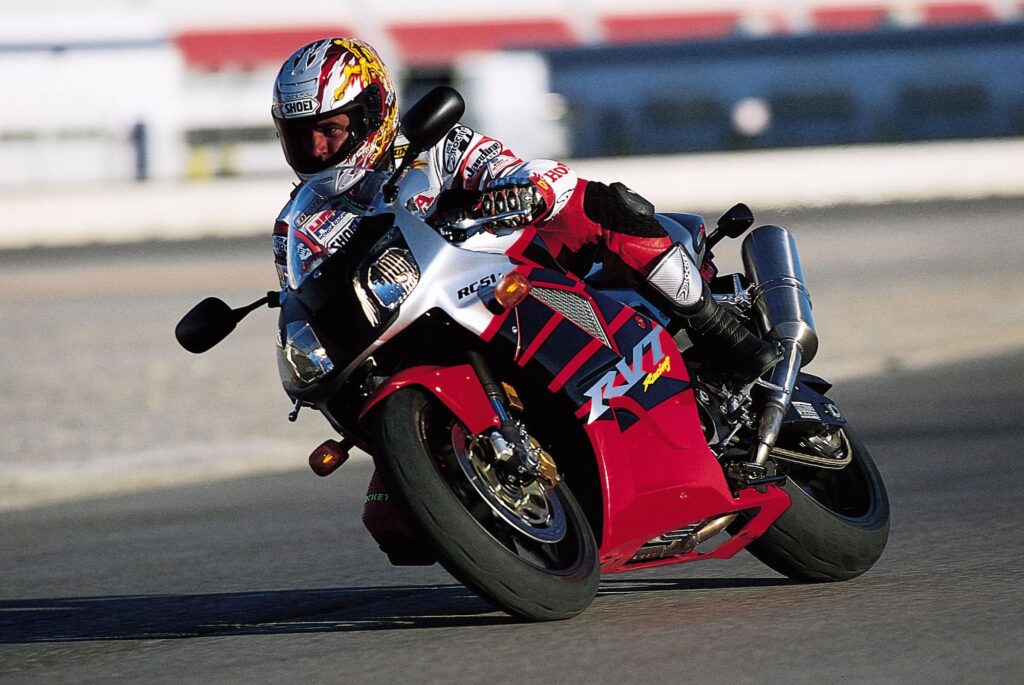
The Honda RC51 is a street-legal race bike. There’s no bones about it. It’s not practical for street use. It gets hot, it’s uncomfortable, and it really doesn’t like going slow.
But it’s definitely a classic, and used prices are already sky high, and likely to remain there (or keep climbing).
The Honda RC51, which is also known as the RVT1000R, and also the VTR1000 SP-1 (2000-2001) and SP-2 (2002+) is a sport bike that’s based on a 999 cc liquid-cooled 90-degree V-twin engine. It’s an engine specifically designed for World Superbike racing, so what we’re getting here is the road legal version.
In street-legal trim the engine is good for 101 kW / 135 hp at 9500 rpm, and a peak of 96 Nm / 71 ft-lb of torque at 8000 rpm. That’s classic V-twin sportbike behaviour. If you look back at the stats for its contemporary with a similar engine design, the Ducati 999, you’ll see very similar figures.
The name “VTR1000” in some markets is somewhat misleading. It actually has almost nothing to do with the Honda VTR1000 SuperHawk, which is a carburettor-fed street bike, other than the fact that they’re both nice to look at and have V-twin engines.
There are a number of differences between the SP-1 and SP-2 versions. These may have been muted over time if owners have modified the fuelling or the suspension, but in principle these are the differences between them.
- The SP2 get a steering damper (though the SP1 doesn’t suffer from head shake in most conditions)
| Spec | SP-1 | SP-2 |
|---|---|---|
| Years | 2000-2001 | 2002+ |
| Throttle body size | 54 mm | 62 mm |
| Injectors | 4 jets | 12 jets (finer spray) |
| Brakes | 34/32 mm pistons, 19mm master cylinder, 4.5mm rotor | 302/30 mm pistons, 17mm master cylinder, 5mm rotor |
Other changes
- Refined tune for reduced low-throttle jerkiness.
- Front fork is 145 lighter, and has softer compression and tighter rebound, with the same spring rate. Travel increased 4.7 to 5.1 inches.
- Shock is 115g lighter, repositioned to allow other exhaust systems, and with a linkage ratio tweaked for softer rates, and more compression and rebound damping
- Brakes were also adjusted.
The suspension changes make the SP2 feel much more plus and controllable, in contrast with the wooden feel of the SP1.
The engine in the RC51 is quite interesting. It’s single-mindedly designed for performance and reliability. It has gear-driven camshafts and shim-under-bucket valve actuation, which leads to 16000 mile or 25600 kilometer valve service intervals. The cylinders have two injectors per cylinder, with refinements in the number of nozzles per injector (to help with atomisation) as noted above.
To help it breathe, Honda gave the RC51 a centrally mounted ram-air intake duct to get air directly through the frame’s steering head to the airbox. This doesn’t just help breathing; it keeps the bike slim (in contrast with side-mounted intakes).
Manual for the Honda RC51 (VTR1000 SP-1 / SP-2)
The above maintenance schedule comes directly from the service manual for the early SP-1 and then from the user’s manual from the SP-2 in later years. The schedule is identical.
You can download Honda Powersports manuals from here.
Here is an archive copy of the owner’s manual for the Honda VTR1000 SP-2.
